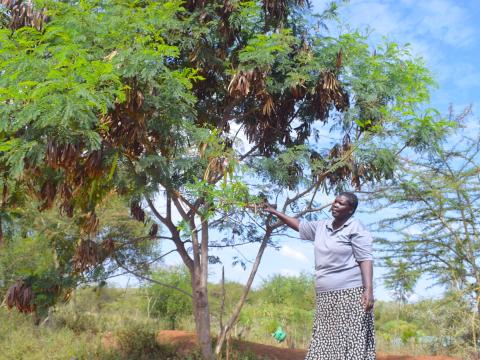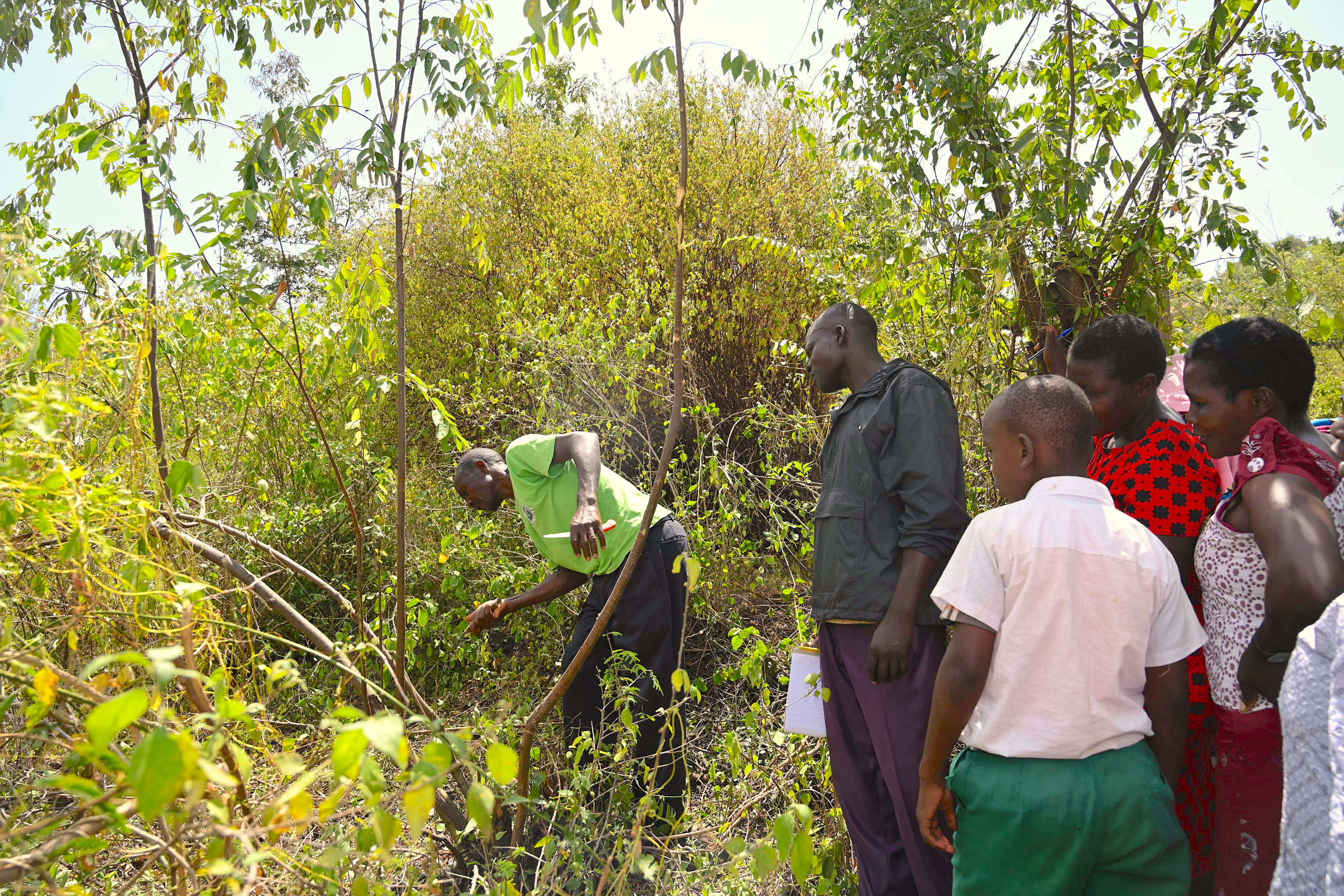Carbon Sequestration: Reviving productivity in arid lands to beat climate change

By David Nderitu, World Vision Communications Officer, Kenya
Carbon sequestration is a crucial component of efforts aimed at mitigating the effects of climate change.
While many people associate carbon sequestration with forests, a lesser-known fact is that this process is also possible in arid and semi-arid areas, commonly known as ASALs.
World Vision is making this possible through its Integrated Management of Natural Resources for Resilience in Arid and Semi-Arid Lands (IMARA) Programme, which is funded by the Swedish International Development Cooperation Agency (SIDA) through the Embassy of Sweden in Nairobi.
The IMARA programme is rolling out regreening initiatives in the counties of West Pokot, Elgeyo Marakwet and Turkana in Kenya.
These initiatives include the Farmer Managed Natural Regeneration (FMNR) technique (an innovative reforestation and land restoration), tree planting and reseeding of bare land with grass.
The objective of these initiatives is to restore degraded land and improve the resilience of communities to climate change shocks.
However, a unique benefit of these initiatives is that they are creating carbon sinks in areas that have not been explored before.
Carbon sequestration in ASAL areas is possible through the establishment of vegetation cover, which absorbs carbon dioxide from the atmosphere through photosynthesis.
The FMNR technique, in particular, is an effective method of regreening degraded land while also sequestering carbon.

The technique involves the selective pruning of trees and shrubs, which stimulates their regrowth and enhances their capacity to absorb carbon.
Additionally, tree planting and reseeding of bare land with grass also contribute to carbon sequestration by establishing new sources of vegetation cover.
The creation of carbon sinks in ASAL areas has several benefits. First, it contributes to efforts aimed at mitigating climate change by reducing the amount of carbon dioxide in the atmosphere.
Second, it enhances the resilience of communities to climate change shocks by improving the water retention capacity of the soil, reducing erosion and enhancing biodiversity.
Third, it creates opportunities for communities to participate in climate change mitigation efforts, which can generate income from carbon credits and other ecosystem services.
World Vision Kenya's IMARA programme is making significant contributions to carbon sequestration in ASAL areas through its regreening initiatives.
The programme's focus on the FMNR technique, tree planting, and reseeding of bare land with grass is creating unique carbon sinks in areas that have not been explored before.
These initiatives are not only contributing to climate change mitigation but also improving the resilience of communities to climate change shocks.
Planting trees or regenerating existing ones provide opportunities for communities to engage in income generating
By engaging communities in these efforts, the IMARA programme is also creating opportunities for sustainable livelihoods and promoting community ownership of natural resources.
Equally the programme is strengthening capacity of county-level institutions and organisations towards climate resilience and low carbon development through integrating climate change into implementation strategies and County integrated Development Plans (CIDP).